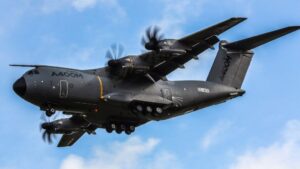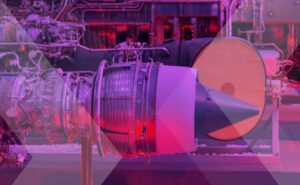The use of 3D printing in the military and defence industry is rapidly growing, offering new possibilities for the design, production, and maintenance of military equipment and weapons. From creating custom parts and prototypes to producing complex and intricate designs, 3D printing is transforming the way the military approaches product design and manufacturing. In this article, we will explore the use of 3D printing in the military and defence industry, including its advantages, applications, and future potential.
Advantages of 3D Printing in the Military and Defence Industry
One of the key advantages of 3D printing in the military and defence industry is the ability to create custom and complex designs quickly and efficiently. With 3D printing, it is possible to produce parts and prototypes in a matter of hours, rather than weeks or months, reducing the time and cost associated with traditional manufacturing methods. This allows the military to design and produce custom equipment and weapons tailored to specific needs and requirements, improving operational efficiency and effectiveness.

Another advantage of 3D printing in the military and defence industry is the ability to produce equipment and weapons in remote and austere environments. With 3D printing technology, it is possible to produce parts and prototypes on-site, reducing the need for long-distance transportation and logistical support. This can be particularly useful in military operations where access to traditional manufacturing facilities is limited or non-existent.
Applications of 3D Printing in the Military and Defence Industry
There are many applications of 3D printing in the military and defence industry, from creating custom parts and prototypes to producing complex and intricate designs. One of the key applications is in the production of replacement parts and equipment for military vehicles and weapons. With 3D printing, it is possible to produce replacement parts quickly and efficiently, reducing downtime and improving operational readiness.
Another application of 3D printing in the military and defence industry is in the production of weapons and ammunition. With 3D printing technology, it is possible to produce custom weapons and ammunition tailored to specific needs and requirements, improving operational effectiveness and efficiency. This can be particularly useful in special operations and other situations where standard weapons and ammunition may not meet the demands of the mission.
In addition, 3D printing is being used to produce specialized equipment and tools for military operations, such as drones, surveillance equipment, and medical devices. With 3D printing technology, it is possible to produce these items quickly and efficiently, reducing the time and cost associated with traditional manufacturing methods.
Future Potential of 3D Printing in the Military and Defence Industry
The potential of 3D printing in the military and defence industry is vast and continues to grow as the technology advances. In the future, 3D printing technology could be used to produce entire military vehicles and weapons, offering greater customization and flexibility in design and production.
In addition, 3D printing could be used to produce equipment and weapons that are lighter and more durable than traditional materials, reducing the weight and bulk of military equipment and improving operational efficiency. This could be particularly useful in situations where mobility and speed are essential, such as in special operations and other high-intensity military operations.
Another potential application of 3D printing in the military and defence industry is in the production of biodegradable and sustainable materials. With 3D printing technology, it is possible to produce materials that are biodegradable and eco-friendly, reducing the environmental impact of military operations and promoting a more sustainable approach to manufacturing.

In addition, there are also technical challenges around the quality and reliability of 3D printed parts and equipment. While 3D printing technology has come a long way in recent years, there are still limitations in terms of the materials that can be used and the precision and accuracy of the final product. This can be particularly important in military operations where reliability and durability are essential.
Despite these challenges, the potential of 3D printing in the military and defence industry is vast and continues to grow. With its many advantages and applications, 3D printing is transforming the way the military approaches product design and manufacturing, offering greater customization, flexibility, and sustainability in design and production.
In addition, 3D printing technology has the potential to offer significant cost savings in the military and defence industry, reducing the need for long-distance transportation and logistical support, and improving operational readiness and efficiency.
Moreover, the use of 3D printing in the military and defence industry can also have important implications for national security and defence. With the ability to produce custom and complex designs quickly and efficiently, 3D printing technology can improve the speed and agility of the military in responding to emerging threats and challenges.
For example, in the event of an emergency or natural disaster, 3D printing technology can be used to produce equipment and supplies on-site, reducing the need for long-distance transportation and logistical support. This can be particularly useful in situations where access to traditional manufacturing facilities is limited or non-existent.
In addition, the use of 3D printing in the military and defence industry can also have important implications for international relations and diplomacy. By promoting innovation and growth in the manufacturing sector, the military and defence industry can help to stimulate economic development and growth, promoting greater stability and cooperation among nations.
Conclusion
The use of 3D printing in the military and defence industry is rapidly growing, offering new possibilities for the design, production, and maintenance of military equipment and weapons. With the ability to produce custom and complex designs quickly and efficiently, 3D printing is transforming the way the military approaches product design and manufacturing. With its many advantages and applications, 3D printing has the potential to revolutionize the military and defence industry, offering greater customization, flexibility, and sustainability in design and production. As the technology continues to advance, it will be exciting to see how 3D printing is further integrated into the military and defence industry, offering new possibilities for innovation and growth.




